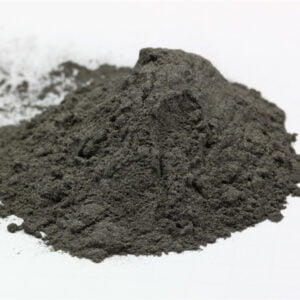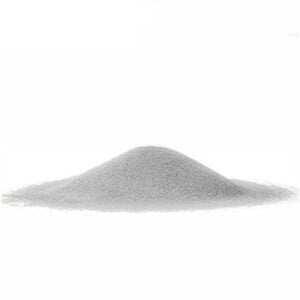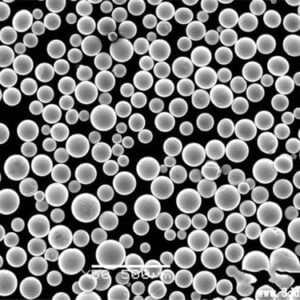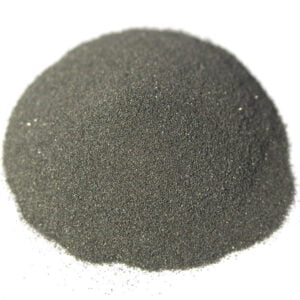CuSn10 pulver
CuSn10-pulver är en koppar-tenn-legering som innehåller ca 10% tenn och resten koppar. Den erbjuder en utmärkt kombination av styrka, duktilitet, korrosionsbeständighet, slitstyrka och antifriktionsegenskaper.
Låg MOQ
Tillhandahålla låg minsta orderkvantitet för att möta olika behov.
OEM & ODM
Tillhandahålla kundanpassade produkter och designtjänster för att tillgodose unika kundbehov.
Tillräckligt lager
Säkerställa snabb orderhantering och tillhandahålla tillförlitlig och effektiv service.
Kundtillfredsställelse
Tillhandahålla högkvalitativa produkter med kundnöjdhet i fokus.
dela denna produkt
Innehållsförteckning
Översikt över CuSn10 Powder
CuSn10-pulver är en koppar-tenn-legering som innehåller ca 10% tenn och resten koppar. Den erbjuder en utmärkt kombination av styrka, duktilitet, korrosionsbeständighet, slitstyrka och antifriktionsegenskaper.
Nyckelegenskaper och tillämpningar av CuSn10-pulver inkluderar:
CuSn10-pulveregenskaper och egenskaper
| Fastigheter | Detaljer |
|---|---|
| Sammansättning | 90% koppar, 10% tenn |
| Täthet | 8,8 g/cc |
| Partikelns form | Oregelbunden, kantig |
| Storleksintervall | 5-150 mikrometer |
| Skenbar densitet | Upp till 50% av verklig densitet |
| Flytbarhet | Måttlig |
| Styrka | Utmärkt för Cu-legeringspulver |
| Duktilitet | Bra |
| Korrosionsbeständighet | Mycket bra |
CuSn10 används i stor utsträckning i lagerhållare, bussningar, svetsstänger och slitdelar inom fordons-, el- och industrisektorerna.
CuSn10 pulversammansättning
Typisk sammansättning av CuSn10-pulver:
CuSn10 pulversammansättning
| Element | Vikt % |
|---|---|
| Koppar (Cu) | Återstående |
| Tenn (Sn) | 9-11% |
| Bly (Pb) | 0,2% max |
| Zink (Zn) | 0,5% max |
| Andra orenheter | 0,1% max |
- Koppar ger utmärkt ledningsförmåga, korrosionsbeständighet, duktilitet
- Tenn förbättrar styrka, hårdhet och slitstyrka
- Bly, zink och andra föroreningar kontrolleras noggrant
Det optimerade Cu-Sn-förhållandet ger en utmärkt kombination av styrka, duktilitet och tillverkningsbarhet.

CuSn10 Pulver Fysiska egenskaper
CuSn10 Pulver Fysiska egenskaper
| Fastighet | Värde |
|---|---|
| Täthet | 8,8 g/cc |
| Smältpunkt | 1020-1040°C |
| Termisk ledningsförmåga | 55 W/mK |
| Elektrisk resistivitet | 7-9 μΩ-cm |
| Omkristalliseringstemperatur | 150-250°C |
| Maximal driftstemperatur | 250°C |
- Densiteten är högre än koppar
- Smältpunkt reducerad jämfört med ren koppar
- Bibehåller god ledningsförmåga
- Omkristallisation möjliggör pulverkomprimering
- Tål måttligt höga driftstemperaturer
De fysiska egenskaperna tillåter användning av CuSn10 i elektriska komponenter som kräver god ledningsförmåga och styrka.
CuSn10-pulvermekaniska egenskaper
CuSn10-pulvermekaniska egenskaper
| Fastighet | Värden |
|---|---|
| Hårdhet | 80-110 HB |
| Draghållfasthet | 350-550 MPa |
| Sträckgräns | 220-320 MPa |
| Töjning | 10-20% |
| Elasticitetsmodul | 110-140 GPa |
- Utmärkt styrka för ett kopparlegeringspulver
- Betydligt högre än rent kopparpulver
- Bra duktilitet för 10% plåtsammansättning
- Hårdhetsvärden lämpliga för slitageapplikationer
- Egenskaper beror på produktionsmetod och porositet
De mekaniska egenskaperna tillåter användning av CuSn10-pulver i höghållfasta elektriska och friktionskomponenter.
CuSn10 pulverapplikationer
Typiska tillämpningar av CuSn10-pulver inkluderar:
CuSn10 pulverapplikationer
| Industri | Exempel på tillämpningar |
|---|---|
| Fordon | Lager, bussningar, bromsbelägg |
| Elektrisk | Svetselektroder, kontakter, kontakter |
| Industriell | Lagerhållare, tätningar, pumphjul |
| Tillverkning | Sintrade verktygskomponenter |
| Olja och gas | Bussningar, kulventiler |
Vissa specifika produktanvändningar:
- Lagerhållare som kräver antifriktionsegenskaper
- Bussning och tryckbrickor i applikationer med hög belastning
- Bilbromsbelägg och kopplingsbelägg
- Elektriska kontakter och stift
- Svetsstänger och lödpasta tillsatsmetall
- Rörkomponenter som ventiler och flänsar
Dess utmärkta kombination av styrka, duktilitet och kostnad gör CuSn10 till ett populärt val för dessa applikationer.
CuSn10 pulverspecifikationer
Huvudspecifikationerna för CuSn10-pulver inkluderar:
CuSn10 pulverspecifikationer
| Standard | Beskrivning |
|---|---|
| ISO 44001 | Koppar och kopparlegeringspulver – Specifikationer |
| ASTM B602 | Standardspecifikation för kopparlegeringspulver |
| EN 1982 | Specifikation för göt och gjutgods av koppar och kopparlegeringar |
| JIS H2111 | Bronspulver |
Dessa definierar:
- Gränsvärden för kemisk sammansättning
- Produktionsmetod – finfördelning
- Erforderliga fysiska och mekaniska egenskaper
- Acceptabla föroreningsnivåer
- Fördelning av partikelstorlek
- Testa protokoll
Efterlevnad säkerställer lämplighet för avsedda tillämpningar på globala marknader.
CuSn10 pulverpartikelstorlekar
CuSn10 pulverpartikelstorleksfördelning
| Partikelstorlek | Egenskaper |
|---|---|
| 5-25 mikrometer | Ultrafin kvalitet för hög densitet och ytfinish |
| 15-45 mikrometer | Vanlig storlek för pressning och sintring |
| 45-150 mikrometer | Större storlekar för bättre pulverflytbarhet |
- Finare partiklar tillåter större förtätning
- Större partiklar förbättrar pulverflödesegenskaperna
- Storleken väljs utifrån de egenskaper som krävs för den slutliga detaljen
- Både sfäriska och oregelbundna former finns tillgängliga
Kontroll av partikelstorleksfördelning optimerar pressegenskaper och slutlig sintrad densitet.
CuSn10 pulver skenbar densitet
CuSn10 pulver skenbar densitet
| Skenbar densitet | Detaljer |
|---|---|
| Upp till 50% av verklig densitet | För pulver med oregelbunden morfologi |
| 4,5-6,5 g/cc | Förbättras med högre packningstäthet |
- Högre skenbar densitet förbättrar pulverflödet och kompakteringsförmågan
- Densitet upp till 60% är möjlig med optimerat sfäriskt pulver
- Hög skenbar densitet möjliggör enklare packning till gröna delar
Högre skenbar densitet leder till bättre tillverkningsproduktivitet och detaljkvalitet.
CuSn10 pulverproduktionsmetod
CuSn10 pulverproduktion
| Metod | Detaljer |
|---|---|
| Atomisering | Smält legeringsström uppdelad i fina droppar som stelnar till pulver |
| Induktionssmältning | Ren koppar och tenn smälte samman under kontrollerad atmosfär |
| Finfördelning av inert gas | Förhindra oxidation av partiklar under produktionen |
| Siktning | Klassificerar pulver i olika partikelstorleksintervall |
- Automatiserad finfördelning möjliggör storskalig produktion
- Kontrollerad smältning och finfördelning minimerar föroreningar
- Inert gas förhindrar pulveroxidation
- Efterbearbetning möjliggör anpassning av partikelstorlekar
Strikta processkontroller resulterar i tillförlitlig pulverkvalitet och repeterbara egenskaper.
CuSn10-pulverprissättning
CuSn10-pulverprissättning
| Faktor | Påverkan på priset |
|---|---|
| Renhetsgrad | Högre renhet ökar priset |
| Partikelstorlek | Finare pulver är dyrare |
| Orderkvantitet | Massrabatter gäller |
| Produktionsmetod | Komplexa processer ökar kostnaderna |
| Ytterligare tjänster | Anpassning medför extra kostnader |
Indikativ prissättning
- CuSn10-pulver: $8-12 per kg
- Lägre priser gäller för bulkorder >1000 kg
Prissättningen varierar baserat på beställningsparametrar som kvantitet, partikelstorlek, renhetsnivå, legeringssammansättning etc.
CuSn10 pulverleverantörer
CuSn10 pulverleverantörer
| Företag | Plats |
|---|---|
| Kymera International | USA |
| Hoganas | Sverige |
| CNPC Powder Group | Kina |
| Shanghai CNPC Pulvermaterial | Kina |
| Gujarat Reclaim Industries | Indien |
| Amerikanska Chemet Corporation | USA |
Urvalsfaktorer för leverantörer:
- Pulverstorlekar och ledtid
- Anpassningsmöjlighet
- Produktionskapacitet
- Förpackningsalternativ
- Prisnivåer
- Kvalitetscertifieringar och efterlevnad
CuSn10 pulverhantering och förvaring
CuSn10 pulverhantering
| Rekommendation | Anledning |
|---|---|
| Undvik inandning | Potentiell irritation i andningsvägarna |
| Använd skyddsmask och skyddsglasögon | Förhindra oavsiktligt intag |
| Säkerställ tillräcklig ventilation | Minska mängden luftburna partiklar |
| Undvik antändningskällor | Risk för brännbart damm |
| Följ antistatiska procedurer | Förhindra brand från statisk urladdning |
| Använd verktyg som inte slår gnistor | Undviker gnistor vid hantering |
| Förvara förseglade behållare i svalt, torrt utrymme | Förhindrar oxidation och fuktabsorption |
Rekommendationer för lagring
- Förvaras i stabila, inerta behållare
- Förvaras åtskilt från syror, ammoniak, acetylen
- Håll temperaturen under 27°C
Korrekt hantering och lagring bevarar pulvrets renhet och förhindrar reaktionsrisker.
CuSn10 pulverinspektion och testning
CuSn10 pulvertestning
| Test | Detaljer |
|---|---|
| Kemisk analys | ICP och XRF för att verifiera sammansättningen |
| Fördelning av partikelstorlek | Siktanalys eller laserdiffraktion |
| Skenbar densitet | Hall-flödesmätartest enligt ASTM B212 |
| Morfologi för pulver | SEM-avbildning av partikelform |
| Tappdensitet | Densitet uppmätt efter mekanisk knackning |
| Analys av flödeshastighet | Gravitationsflöde genom specificerat munstycke |
Stränga tester säkerställer att pulvret uppfyller den kemiska sammansättning, fysikaliska egenskaper och mikrostruktur som krävs för applikationen.
CuSn10 Powder För- och nackdelar
Fördelar med CuSn10 Powder
- Utmärkt styrka för ett kopparlegeringspulver
- God duktilitet och formbarhet
- Mycket god korrosionsbeständighet
- Kostnadseffektivt jämfört med bronskvaliteter
- God elektrisk och termisk ledningsförmåga
- Återvinningsbar och miljövänlig
Nackdelar med CuSn10 Powder
- Lägre konduktivitet än rent kopparpulver
- Måttlig hög temperaturstyrka
- Tung jämfört med aluminium eller magnesiumlegeringar
- Ej lämplig för starkt belastade strukturella komponenter
- Ytan missfärgas med tiden om den inte är belagd
- Begränsningar för applikationer i kontakt med livsmedel
Jämförelse med CuNi10-pulver
CuSn10 vs CuNi10 pulver
| Parameter | CuSn10 | CuNi10 |
|---|---|---|
| Täthet | 8,8 g/cc | 8,9 g/cc |
| Styrka | 350-550 MPa | 500-650 MPa |
| Konduktivitet | 55 W/mK | 20 W/mK |
| Korrosionsbeständighet | Utmärkt | Mycket bra |
| Kostnad | Låg | Hög |
| Användningsområden | Elektrisk, måttlig belastning | Höghållfasta strukturer |
- CuSn10 ger bättre konduktivitet och kostnad
- CuNi10 har högre draghållfasthet
- CuSn10 föredras för elektriska komponenter
- CuNi10 lämpad för höghållfasta konstruktionsdelar
Vanliga frågor om CuSn10 Powder
F: Vilka är de huvudsakliga användningsområdena för CuSn10-pulver?
S: Huvudapplikationer inkluderar lagerhållare, bussningar, svetsstänger, bromsbelägg, antifriktionskomponenter och elektriska kontakter, kopplingar och borstar. Det används ofta i bil- och elprodukter.
F: Kräver CuSn10-pulver särskilda försiktighetsåtgärder?
S: Allmänna försiktighetsåtgärder rekommenderas, inklusive att undvika inandning, säkerställa korrekt ventilation, kontrollera damm, förhindra antändningskällor, undvika uppbyggnad av statisk laddning, använda gnistfri verktyg och förvaring i en torr, inert atmosfär.
F: Vad påverkar egenskaperna hos CuSn10-pulverdelar?
S: Nyckelfaktorer är skenbar densitet, partikelstorleksfördelning, komprimeringstryck, sintringstemperatur och -tid, legeringssammansättning, föroreningar och porositet.
F: Vad är den viktigaste skillnaden mellan brons- och CuSn10-pulver?
S: Bronspulver innehåller 90-95% koppar medan CuSn10 har 90% koppar, 10% tenn. CuSn10 ger en optimal kombination av styrka, duktilitet och kostnad.
Få det senaste priset
Om Met3DP
Produktkategori
HOT SALE
KONTAKTA OSS
Har du några frågor? Skicka oss meddelande nu! Vi kommer att betjäna din begäran med ett helt team efter att ha fått ditt meddelande.

Metallpulver för 3D-printing och additiv tillverkning
FÖRETAG
PRODUKT
cONTACT INFO
- Qingdao City, Shandong, Kina
- [email protected]
- [email protected]
- +86 19116340731













